Race, Ethnicity and Indigeneity
Theresa Petray
Content notes: This chapter discusses violence and inequalities related to racism, including extrajudicial killings of black and Indigenous people. It also contains images and videos of deceased people.
The key goals of this chapter are to explain that:
- race, ethnicity, and Indigeneity are different (but overlapping) concepts, and we will explore what these terms mean in the context of Australia and New Zealand
- race, ethnicity, and Indigeneity are social facts – in other words, they are socially constructed but with real material consequences for people’s lives
- there are key differences between stereotypes, prejudice, discrimination, and structural racism that are important to understand sociologically
- despite some narratives about multiculturalism and inclusion, Australia and New Zealand, like many other parts of the world, continue to be characterised by high levels of inequality based on race, ethnicity and Indigeneity
- strengths-based approaches to these inequalities show us that problem-solving needs to be based on consultation and solutions from within communities are generally the most effective.
Overview
The #BlackLivesMatter (#BLM) movement officially began in the United States of America back in 2013. On 26 February 2012, George Zimmerman shot black teenager Trayvon Martin, who was unarmed but considered ‘suspicious’. Zimmerman faced trial for murder but was found not guilty – a decision that sparked protests across America (Nummi et al., 2019). These actions coalesced as a social movement (see social movements chapter), notably using social media (see the digital sociology chapter).
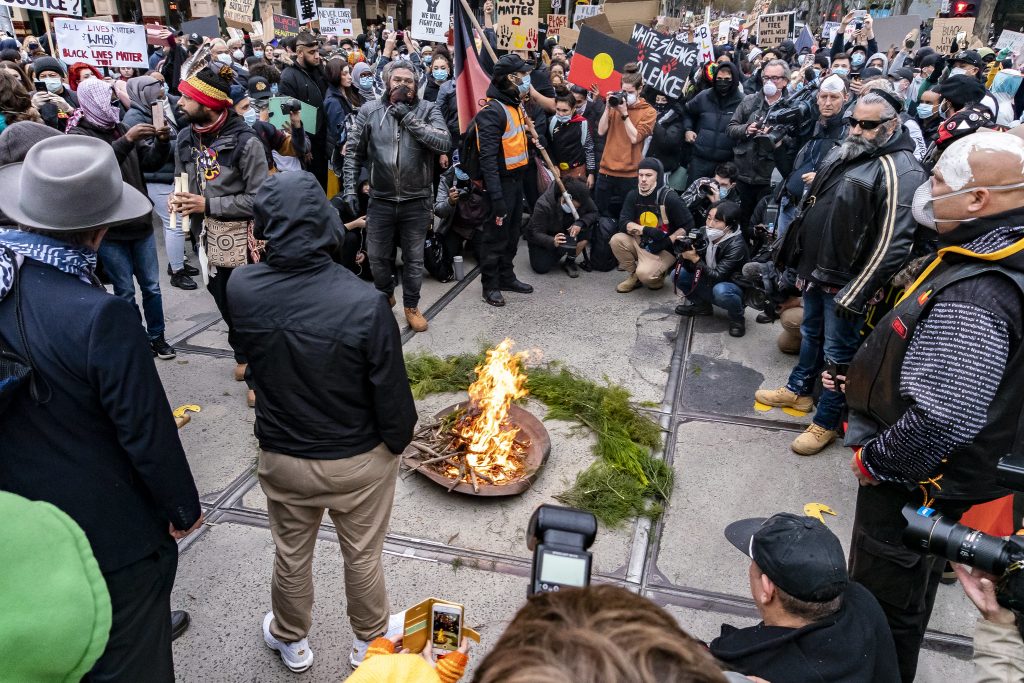
Over the next several years, the #BLM movement remained active, especially in response to the tragic deaths of black Americans, often killed by police officers. In May 2020, it peaked again following the killing of George Floyd by Minneapolis police. This time, the protests spread around the world, including Australia and New Zealand. In both places, the campaigns focused not just on Floyd’s death and the extrajudicial killings in America, but made connections to overpolicing of Maori, Aboriginal and Torres Strait Islander peoples, and migrants, particularly from Pasifika and African backgrounds (Moran & Gatwiri, 2022).
In Australia between 1991 and 2021, at least 432 Aboriginal and/or Torres Strait Islander people died in custody – while being detained by police, or in prison, and First Nations people are dramatically overrepresented in Australian prisons (Gatwiri & Townsend-Cross, 2022; Watego, Singh & Macoun, 2021). The Australian #BLM movement especially picked up on the threads of the existing campaign to stop Black/Blak[1] Deaths in Custody. On social media #AboriginalLivesMatter became a phenomenon in its own right (Dejmanee et al., 2022).
The movement against these deaths at the hands of police, prisons, and vigilantes shows how relevant the concept of race remains today. It also demonstrates the global dimensions of race, at the same time that it highlights the importance of understanding local contexts. We will explore both throughout this chapter.
Definitions
Scientific knowledge systems emphasise classification – all living creatures are organised in classification systems, as are minerals and rocks, chemical elements, and more. Classification systems focus on some similarities and differences to decide which group something belongs to.
Race is a commonly used classification system amongst humans. The idea of race refers to superficial physical differences that a particular society considers significant. Race is generally determined by superficial physical characteristics – features like skin colour, facial features, and hair type. In the past, theorists have posited categories of race based on various geographic regions, ethnicities, skin colours, and more. Their labels for racial groups have connoted regions (Mongolia and the Caucus Mountains, for instance) or denoted skin tones (black, white, yellow, and red, for example).
However, this typology of race developed during early racial science has fallen into disuse, and racialisation (the social construction of race) is a far more common way of understanding racial categories. According to this school of thought, certain groups become racialised through a social process that marks them for unequal treatment based on perceived physiological differences, which we will discuss more below.
Ethnicity is a term that describes shared culture — the practices, values, and beliefs of a group. This might include shared language, religion, and traditions, among other commonalities. Ethnicity, like race, continues to be an identification method that individuals and institutions use today. The Australian Bureau of Statistics (2019) uses ethnicity to refer to groups who share one or more of the following characteristics:
- a long shared history, the memory of which is kept alive
- a cultural tradition, including family and social customs, sometimes religiously based
- a common geographic origin
- a common language (but not necessarily limited to that group)
- a common literature (written or oral)
- a common religion
- being a minority (often with a sense of being oppressed)
- being racially conspicuous.
Indigeneity is a broad term that refers to the First Peoples of a specific regional area (Alfred & Corntassel, 2005). The term ‘Indigenous’ is an adjective used globally, and it encompasses more than 370 million people around the world. Common features of peoples who identify as Indigenous include: (1) historical connections to pre-colonial societies; (2) strong connections to a particular territory; and (3) distinct identities and practices from other social groups now living in those territories. Indigenous peoples are often minorities, either in terms of population size and/or in terms of access to power structures.
In Aotearoa New Zealand, the First People are the Maori, who arrived from eastern Polynesia at least four centuries before Europeans. Almost 800,000 people, or 16.5% of the population in Aotearoa New Zealand identified as Maori in 2018, the second largest ethnic group following Pakeha, or New Zealanders of European descent.
In Australia, there are two broad groups of First Peoples and great diversity within these two groups. Aboriginal peoples have connections to the mainland of the Australian continent, while Torres Strait Islander peoples traditionally occupy the lands and waters between the tip of Cape York and Papua New Guinea. There are over 250 language groups across Australia, and the best approach for speaking about people respectfully is to find out how they identify (Australian Institute of Aboriginal and Torres Strait Studies, 2020).
🧠 Learn More
See an interactive map of Australia showing the Aboriginal and Torres Strait Islander language, social, or nation groups.
See a [PDF] map of Aotearoa New Zealand with iwi identified for different parts of the country.
Who are the First Nations or iwi of the places you are familiar with?
Census Statistics
As we said above, the two largest ethnic groups in the 2018 Census of Aotearoa New Zealand are Pakeha, or European New Zealanders. Census respondents might choose more than one ethnicity, so the total numbers add up to more than the 5.1 million people counted in the Census.
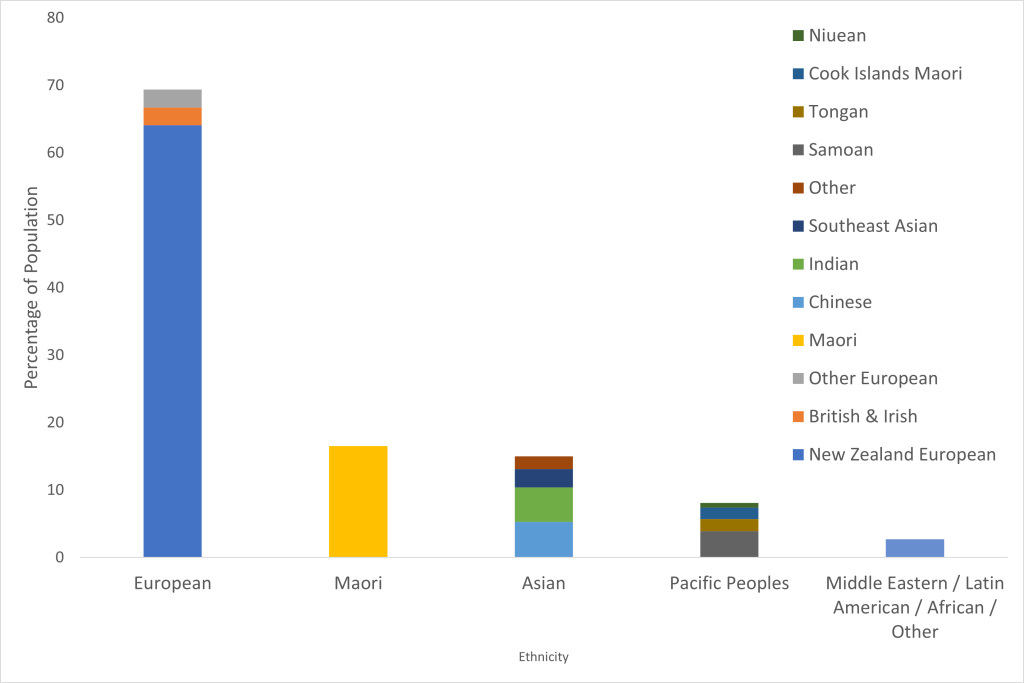
The Australian Census asks about ancestry and country of birth. In the 2021 Census, 27.6% of people in Australia, or more than 7 million people, were born overseas (ABS, 2022). The most common countries of birth, besides Australia, were England, India, China, New Zealand, and the Philippines. Respondents to the Australian Census can nominate up to two ancestries.
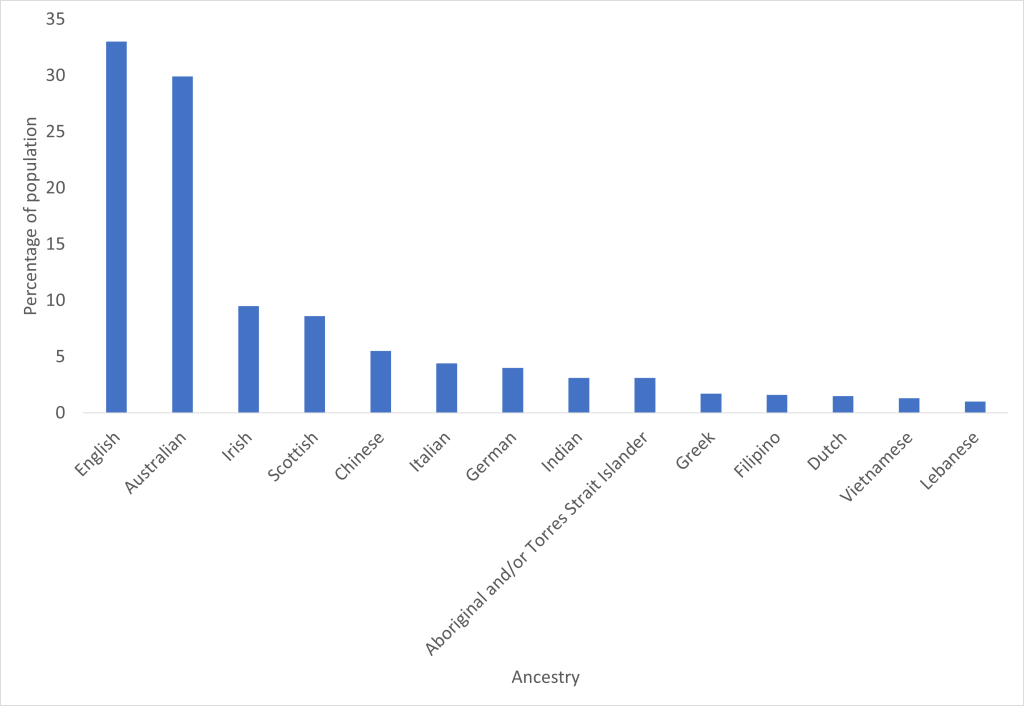
Identities and Labels
When discussing race, ethnicity, and Indigeneity, individuals may choose to identify in a particular way, and at the same time they may be identified by others in complex and sometimes contradictory ways. For example, many Indigenous people in Australia have light skin and in some contexts are considered ‘too white’, and in other situations they are considered ‘black’ – regardless of how they may think of themselves. Watch the video below [6:46] to hear some experiences of this.
To add another layer of complication, many people have multiple identities. That is, they may have parents or ancestors from different races or ethnicities, and identify with more than one of these categories.
Remember to let people identify themselves and use their terms whenever you can. Check trustworthy sources for the most appropriate ways to use language – for example in Australia, ‘Indigenous Australian’ used to be the norm but now it is more appropriate to use ‘Aboriginal and Torres Strait Islander’, or ‘First Nations’ (Reconciliation Australia, n.d.).
Some terms attempt to encompass a range of identities. For example, ‘people of colour’ or POC, has spread from the United States to other English-speaking countries. BAME (Black, Asian and minority ethnic) is common in the UK. More recently, BIPOC (Black, Indigenous, and People of Colour) has tried to recognise that Black people and Indigenous peoples have particular experiences of racialisation. The problem with all of these terms is that they group together diverse ethnicities and might have the effect of homogenising the groups into a single category, and erasing the specific experiences that different groups have. However, they have political meanings that recognise the hierarchies that exist which place whiteness in more powerful positions than all other categories (Ooi, 2020; Pearson, 2017).
Settler-Colonialism
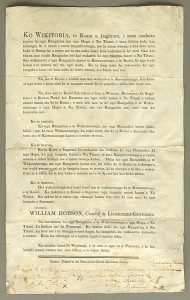
When James Cook and his ship the Endeavour arrived in Poverty Bay in Aotearoa New Zealand in 1769, and in Botany Bay in Australia in 1770, he and his crew found lands that did not need ‘discovering’ since they were already occupied. However, sealers, whalers and traders moved to Aotearoa New Zealand in the last few decades of the 1700s, and convict ships began arriving in Australia from 1788. Later, migration to both places came primarily from Britain, Ireland, and western Europe. In 1840, the British presented the Treaty of Waitangi to a gathering of Maori people before it was signed by more than 500 Maori chiefs across the two islands. Disputes remain between the English-language and the Maori-language versions of the Treaty, but one key thing it did was pave the way for the British crown to consider New Zealand part of its sovereign lands.
Colonisation in Australia did not engage with a treaty process, instead relying on the legal concept of terra nullius, the belief that Australia was land that belonged to no one. Thus, British sovereignty was declared and recognised in international law.
Both Australia and Aotearoa New Zealand became settler-colonies. A settler-colonial system is a kind of colonialism where the settler society replaces the First People – this is different from extractive colonialism where, for example, colonising nations extracted natural resources but only small numbers of colonisers relocated to that new place. Settler-colonies develop a national identity and political structures that eventually become distinct from the country of origin, but from the perspective of the First Peoples, they remain colonial structures (Veracini, 2015).
Australia began, as many people know, as a penal colony, with 80,000 involuntary migrants arriving between 1788 and 1840. Free settlers soon saw the continent as an opportunity, beginning in the 1830s. The 1850s, though, saw a big wave of settlers arriving in search of wealth. The vast majority were from Britain, Ireland, and Europe. A small number of these free settlers were Chinese and other Asian migrants seeking economic gain in the gold fields and pearl shell diving industry. An even smaller number were Pacific Island labourers brought to Australia as contract labourers to work on sugar cane farms in a practice known as ‘blackbirding’[2]. Post-WWII, Australia gradually began increasing migration from other parts of the world – southern and eastern Europe, then Asia (especially in the Vietnam War era), the Middle East and Africa.
Likewise, Aotearoa New Zealand grew dramatically in the mid-1800s as mostly British settlers arrived in droves. By 1858, Europeans outnumbered Maori people. From the 1990s onwards, migrants from non-European backgrounds began to arrive in larger numbers, especially from Asian and Pacific backgrounds.
Today, our societies are multicultural, although the extent to which this multiculturality is embraced varies. But as settler-colonial societies, Australia and New Zealand “retain pervasive colonial dynamics, which continue to structure (hierarchical) ethnic relations” (Broman et al., 2021, p. 2110). Attempts to assimilate both First Peoples and migrants into a supposedly cohesive national society have been central to the histories of Australia and New Zealand (van Krieken, 2012).
Social Facts
Although race may be treated as a ‘scientific’ classification scheme, and the categories that people fall into are ostensibly based on physical characteristics, there is actually nothing about race that makes it an objective fact. As we explain above, the process of racialisation explains how society becomes built around the perception that race is an important way to construct hierarchies. However, the categories, and the values we attach to them, are socially constructed.
Genetic research shows that 99.9% of human DNA is identical, regardless of geography or ethnicity. In other words, we have far more in common across races than some might think. The physical characteristics that are relied upon to racially categorise people are a bit arbitrary, and other physical markers would result in very different groupings of people. If these ways of categorising people into races were value neutral, we probably would not include a chapter in a sociology textbook about it. But as we will discuss further below, racialisation results in some pretty significant inequalities around the world, including in Aotearoa New Zealand and in Australia.
One way that we can see evidence of the social construction of the categories is the way that names for the categories change with time. For example, in the very earliest days of Australia’s colonisation, the First Peoples were referred to as ‘Indians’. This shifted to ‘Aborigines’, a category which included Torres Strait Islander people – despite the social, cultural, and linguistic differences between the two broad groups. In the 1990s, the term ‘Indigenous Australians’ became popular, again encompassing both people from Aboriginal and from Torres Strait Islander backgrounds. Now, the common terminology is to name both broad groups – ‘Aboriginal and/or Torres Strait Islander peoples’. But increasingly, we are seeing terms like ‘First Nations’, ‘First Peoples’, and more common references to specific Nation groups (e.g. Wiradjuri, Wulgurukaba, Larrakia). These terminology changes are not as simple as just using different words, but in fact represent different ways that, as a society, we think about the groups.
Another example that helps us to identify race as a social construction is the changing perceptions of who falls within the categories, across time and in different contexts. 4.4% of Australians identify their ancestry as Italian, and people of Italian ancestry began arriving in Australia with the First Fleet in 1788. However, the Immigration Restriction Act (1901) was often used to refuse admission to Italian migrants who were racialised and treated as ‘primitive’ and ‘inferior’. Mass migration from Italy to Australia began after WWII, and today Italian is often considered an ancestry or an ethnicity, rather than a separate racial category.
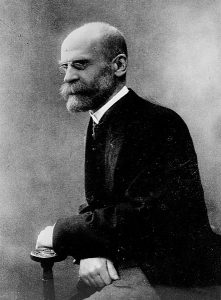
It is helpful to think about race as a social fact. This term comes from sociologist Émile Durkheim, and are used to understand factors outside of the individual which shape their choices. These factors might be institutions, normal values, beliefs, class structures, roles, or laws – or racial categories. Eduardo Bonilla-Silva (1999, p. 899) explicitly defines race as a social fact, noting that although it is socially constructed, “highly malleable and historically-bounded”, it is a central principle around which contemporary societies are organised.
According to Durkheim (1982/1895), social facts exist beyond the awareness of individuals, but they compel individuals to follow their rules. This is most obvious when we try to resist social facts, which can result in punishments ranging from social exclusion to violence. The short video below [3:59] explains Durkheim’s conceptualisation of social facts.
Durkheim was a structural functionalist, meaning that he studied social structures and how they influence individuals (rather than the other way around). Society, for Durkheim, is a persistent structure that individuals merely pass through – it has its own logic and rules, rather than merely being the sum of the various individuals:
The totality of beliefs and sentiments common to the average members of a society forms a determinate system with a life of its own. It can be termed the collective or creative consciousness. (Durkheim, 1893/1984, pp. 38-9)
In other words, the collective consciousness is the shared understandings of social norms and values in a society. We know that the collective consciousness is socially constructed because these norms and values differ across context, and do change over time.
Race is a social fact because it does not rely on the actions of individuals to continue to exist. It is a fact because, even though it is socially constructed, race (and particularly the hierarchies that emerge from racialisation) have actual, material effects on people. Remember above where we discussed the way that some people might identify in one way, but be categorised in others? This is an example of what Durkheim means about social facts existing above the level of the individual. Someone who moves through the world with brown skin will be treated by others in particular ways, no matter how they identify themselves. That going against the norms “is never without being forced to fight against them”, as Durkheim (1895/1982, p. 51) puts it.
Hierarchies attached to racism mean that some races and ethnicities become subordinated while others maintain dominance. Scapegoat theory, developed initially from John Dollard’s (1900-1980) frustration-aggression theory, suggests that the dominant group will displace their unfocused aggression onto a subordinate group (1939). History has shown us many examples of the scapegoating of a subordinate group. An example from the last century is the way that Adolf Hitler was able to use the Jewish people as scapegoats for Germany’s social and economic problems. In Australia in 1996, One Nation MP Pauline Hanson used Asian migrants as scapegoats, which harkened back to laws enacted around Australia to reduce the rights of Chinese migrants during the Gold Rush. For example, in New South Wales in the 1860s, Chinese diggers could only work goldfields specifically declared open to them (Curthoys, 2001, pp. 115-6). In practice this meant Chinese diggers would have access to a gold field after it had begun declining in productivity. Other parts of Australia had similar measures in place to discourage Chinese immigration (Woods, 2018).
View Pauline Hanson’s maiden speech to the Australian Parliament House of Representatives, in 1996, where she expressed her fear of Australia being “swamped by Asians”. The article also includes statistics about the proportion of Australians born in Asia in the two decades following Hanson’s speech. Learn more about Chinese experiences on Australia’s goldfields, including short videos and written stories.
Prejudice and Discrimination
The terms stereotype, prejudice, discrimination, and racism are often used interchangeably in everyday conversation. But when discussing these terms from a sociological perspective, it is important to define them: Stereotypes are oversimplified ideas about groups of people; prejudice refers to thoughts and feelings about those groups; while discrimination refers to actions toward them.
As stated above, stereotypes are oversimplified ideas about groups of people. Stereotypes can be based on race, ethnicity, age, gender, sexual orientation — almost any characteristic. They may be framed as compliments (for example, the belief that Asian people are good at maths or music) but are often negative (such as when members of a dominant racial group suggest that a subordinate racial group is stupid or lazy). In either case, the stereotype is a generalization that doesn’t take individual differences into account and reduces people to singular details.
Prejudice refers to beliefs, thoughts, feelings, and attitudes that someone holds about a group. A prejudice need not be based on experience; it is a prejudgment that may originate outside of actual experience. Many people think of racism as a type of prejudice – a belief that one racial category is superior or inferior to others. However, as we will discuss further below, a sociological analysis is interested in racism beyond individual thoughts and feelings.
While prejudice refers to biased thinking, discrimination consists of actions against a group of people. Discrimination can be based on age, religion, health, and other indicators. Discrimination based on race or ethnicity can take many forms, from unfair housing practices to biased hiring systems. In both Australia and New Zealand, as in many other parts of the world, overt racial discrimination is part of history. The impacts of discrimination are still felt today, as we will explore later in this chapter.
The opposite is also true – many people today have benefitted from the lack of racial discrimination affecting their lives. This is often referred to as white privilege, though this is a topic that makes many people uncomfortable. While most white people are willing to admit that non-white people live with a set of disadvantages due to the colour of their skin, very few are willing to acknowledge the benefits they receive simply by being white. White privilege refers to the fact that dominant groups often accept their experience as the normative (and hence, superior) experience. Failure to recognise this ‘normality’ as race-based is an example of a dominant group’s often unconscious racism.
🛠️ Sociological Tool Kit

What are some ways that you have experienced unearned disadvantage in your life? What are some ways you have experienced unearned advantages in your life?
Feminist sociologist Peggy McIntosh wrote an essay called “White Privilege: Unpacking the Invisible Knapsack” (1989). In it, she describes several examples of “white privilege.” For instance, white women can easily find makeup that matches their skin tone, and white people can be assured that, most of the time, they will be dealing with authority figures of their own race. White children have an easy time finding toys with a similar appearance, and see children who look like them in picture books and cartoons.
How many other examples of white privilege can you think of?
It is important to remember that acknowledging privileges that accrue to some people and not others is not about placing blame or making anyone feel guilty. Instead, this activity lets us see that racialised inequality is bigger than just individual beliefs, attitudes, and practices. Other forms of inequality, like those based on gender, sexuality, or age might also lead to privilege – unearned advantages – in the lives of people in the dominant group. Intersectionality considers the ways that multiple factors relate to each other to determine someone’s overall privileges and disadvantages in society.
Unconscious bias refers to hidden beliefs that we all hold, that influence how we behave. Researchers at Harvard University have developed a series of Implicit Association Tests that allow you to uncover potential unconscious biases based on race, religion, gender, disability, and more attributes. Project Implicit has a web page to explore the tests further. Identifying unconscious bias is just the first step, and institutions seeking to reduce the impacts of unconscious bias must identify specific actions beyond just acknowledging its existence.
Institutional racism refers to the way in which racial distinctions are used to organise the policy and practice of state, judicial, economic, and educational institutions. Institutional racism may be set up to purposely exclude people based on race, or the outcomes may be due to unconscious bias.
Institutional racism that is widespread begins to systematically reproduce inequalities along racial lines. They define what people can and cannot do based on racial characteristics. It is not necessarily the intention of these institutions to reproduce inequality, nor of the individuals who work in the institutions. Rather, inequality is the outcome of patterns of differential treatment based on racial or ethnic categorizations of people.
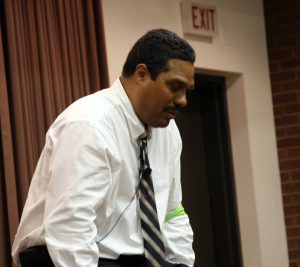
This becomes what is known as systemic or structural racism, or the perpetuated discrimination within a system. Structural racism is deeply embedded throughout whole systems and upheld by structures, like political systems, legal systems, health care systems, or school systems (Bonilla-Silva, 1997; Braveman et al., 2022). All forms of racism – individual, interpersonal, and institutional – are underpinned by structural racism. Sociologist Eduardo Bonilla-Silva (1997) identifies differential allocation of economic, political, social, and psychological rewards based on race, and racial hierarchies that guide the actions of members of a society as key features of structural racism. When we consider racialisation as a structure, according to Bonilla-Silva (1997, p. 475), we understand that racialisation “becomes an organizing principle of social relations in itself”. Although this structure of society exists well above the level of individuals, Bonilla-Silva (1997) acknowledges that it changes over time and place.
🔍 Look Closer: The White Australia Policy
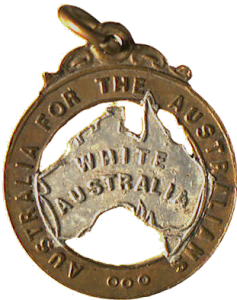
The so-called ‘White Australia Policy’ was actually a group of laws implemented from the beginning of Federation in 1901 until the 1970s. The first three of these laws were:
- the Immigration Restriction Act (1901), which restricted Asian and Pacific Islander migration to Australia
- the Pacific Island Labourers Act (1901), which allowed most Pacific Islanders working in Queensland and northern New South Wales to be deported after 1906, and limited immigration of any additional Pacific Islanders between 1901 and 1906
- the Post and Telegraph Act (1901), which required ships carrying Australian post to employ only white workers.
The laws avoided using racialised terms but were written in a way that they could be applied differently based on a migrant’s race. Read more about these laws and how they worked. A key component of the Immigration Restriction Act (1901) was a dictation test, which enabled Customs officers to selectively require migrants to undertake a dictation in any European language. The test was not required of all migrants and was generally reserved for those considered ‘undesirable’ because of their race and/or country of origin. The test could be given any number of times, so in some cases, migrants who passed once were given another language to transcribe, until they failed.
The effect of the laws was powerful, with non-white migrants avoiding attempts to move to Australia, and in some cases being denied tickets for ships headed to Australia. The White Australia legislation was slowly dismantled, beginning with the introduction of the Migration Act (1958), and then the Racial Discrimination Act (1975).
Some Sociological Understandings of Racialisation
Sociology utilises a number of different theoretical approaches, and conceptual tools, to make sense of the reasons for, and impacts of, racial hierarchies and inequalities. We explore some specific inequalities in the section below, but here want to outline some key tools to help you use your sociological imagination when considering race, ethnicity, and Indigeneity.
Whiteness Studies and Critical Race Theory
🧠 Learn More
Critical race theory has become a topic of discussion, especially amongst politicians in North America, in recent years. Read about these debates.
Primarily, the arguments are around whether schools should be teaching ‘critical race theory’. This demonstrates a misunderstanding of what a theory is and does – a theory is a framework for understanding why society is the way it is, mostly used by academics (like sociologists) to make sense of the world. It is not something that exists in the world more broadly. Although schools might be delivering a curriculum that has been informed by the tenets of critical race theory, it is unlikely they are teaching the theory itself, especially in primary schools.
Racialisation is an important focus in sociology, identified by African American sociologist W. E. B. Du Bois in 1903 as “the problem of the 20th century” (Du Bois, 1903/2009, p. 1), and argued by Trawlwoolway sociologist Maggie Walter and Bundjalung and Worimi sociologist Kathy Butler, it remains the problem of the 21st century (Walter & Butler, 2013). In Aotearoa New Zealand and Australia, a sociology of race must include consideration of Indigeneity. To understand the societies of Aotearoa New Zealand and Australia, both must be considered holistically (Bargallie & Lentin, 2021; Moreton-Robinson, 2015).
Critical race theory is an explanatory tool that has received a lot of attention in recent years, becoming the focus of political debates especially in the United States. Critical race theory has roots in the US Civil Rights Movement in the 1960s. Foundational scholars in the field are Kimberle Crenshaw, Richard Delgado, and Derrick Bell, amongst others. Critical race theory recognises the social construction of racialised hierarchies that become normalised in social interactions. Experiencing racism, then, becomes an everyday occurrence that is very difficult to identify, especially by those who benefit from its perpetuation (Delgado & Stefancic, 2017). There are five tenets of critical race theory (Delgado & Stefancic, 2001; Ladson-Billings, 2021), which we expand on below:
- the belief that racism is a normal feature of society, not an aberrant occurrence or isolated incident
- the focus on interest convergence, or the expectation that people who hold power within a structure will only move towards justice for marginalised people if it is also in their own interests
- the understanding of race as a socially constructed category rather than a scientific one, but one with real social power to impact people’s lives
- attention to the intersections between race, gender, class, nation, sexuality, disability, and more work together to compound hierarchies
- the importance of counter-storytelling and an awareness that history is told from the perspective of power-holders and leaves out many valuable perspectives.
Thus, one task of critical race theory, for which it is often criticised, is ‘counter-storytelling’ – re-examining historical events and understanding them through a lens of structural racism. This is not about changing history, but rather adding nuance to our understandings of that history. This is a deliberate act in a time when some powerholders would prefer a ‘post-racialist’ discourse that considers contemporary states and societies as ‘colourblind’, ‘post-colonial’, and no longer built on racism. This rhetoric positions attempts to acknowledge historical and ongoing racial inequalities as ‘divisive’. For example, the Uluru Statement from the Heart (2017), which seeks amongst other things a First Nations Voice to Parliament, is opposed by commentators like Andrew Bolt because it positions First Nations people as “greedy and irreverent” (Shulz et al., 2019, p. 3).
🔍 Look Closer: The Uluru Statement from the Heart
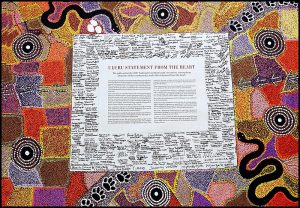
The Uluru Statement from the Heart was presented to Australia in May, 2017 and signed by 250 First Nations delegates to the National First Nations Constitutional Convention. This Convention ratified the decisions that had been made by a series of First Nations Regional Dialogues about constitutional reform, held throughout 2016 and 2017. Thus, the Uluru Statement is broadly representative, and built on processes of Aboriginal decision-making.
The Uluru Statement calls for a First Nations Voice to Parliament to be enshrined in the Australian Constitution. This was the biggest focus of conversation for a few years, due in part to a commitment by Prime Minister Anthony Albanese, elected in 2022, to hold a Referendum on the matter. In October 2023, 60% of Australian voters indicated they did not support changing the Constitution as proposed.
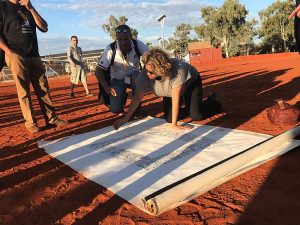
However, there are two other calls made within the Uluru Statement: a process of truth-telling (which we might, perhaps, think of as ‘counter-storytelling’), and a makarrata commission to oversee a process of treaty-making.
Unlike Aotearoa New Zealand’s Treaty of Waitangi between Britain and Maori, Australia has no formal treaties with First Nations peoples. A treaty-making process in Australia would challenge the ‘white possessive logic’ (Moreton-Robinson, 2011) that we discuss below. From a critical race theory perspective, proponents of the treaty-making process might ask what interest convergence there will be, and highlight that in their campaigns to non-Indigenous Australians.
You can read the Uluru Statement, or listen to it, and explore videos and timelines explaining how it came about.
Another tenet of critical race theory is that racism is a normal and effectively a permanent structure, at least in society as we know it. This does not mean it cannot be dismantled, but that it has not been yet. Discourses of ‘post-racism’ fail to consider the ongoing inequalities that emerge from structural racism. One way that this occurs is by whiteness becoming a taken-for-granted norm against which all other races are measured. This process, known as ‘othering’, creates an invisible normal and a highly visible ‘other’ (Nicolacopoulos & Vassilacopoulos, 2019). These ‘other’ groups are often the subject of research, policy-making, and program development aimed at ‘fixing’ the problems that prevent the ‘other’ from being more like the group against which the norms are set. However, understanding where those norms come from is perhaps a more telling mechanism of understanding inequalities. Thus, another important focus of critical race theory is an examination of whiteness.
Critical race theory has been criticised by some academics for focusing more on the legacies of slavery in the Americas than on issues of Indigeneity, colonisation, and dispossession (Velazquez et al., 2022). In attempting to weave the two together, some scholars focus on ‘whiteness as property’, which offers a point of convergence between understanding the experiences of First Nations people who were dispossessed by white colonialism, and other people of colour, especially in the context of slavery and indentured servitude (Harris, 1993). One way that white colonialism justified itself was the belief that First Nations’ relationship to land was ambiguous, unclear, and not equivalent to European conceptions of property ownership. Likewise, Quandamooka scholar Aileen Moreton-Robinson (2011) seeks to understand the ‘white possessive logic’ that allows racial hierarchies to flourish. This possession is focused on land, access to resources, and power within and over nations. White possession has become naturalised, normalised, and the invisible universal (similar to the process of whiteness and othering described above).
Multiculturalism and Social Exclusion
Throughout Western history intergroup relations (relationships between different groups of people) have been subject to different strategies for the management of diversity. The problem of management arises when differences between different peoples are regarded as so insurmountable that it is believed they cannot easily coincide or cohabit with one another. A strategy for the management of diversity refers to the systematic methods used to resolve conflicts, or potential conflicts, between groups that arise based on perceived differences. How can the unity of the self-group or political community be attained in the face of the divisive presence of non-selves or others? As Richard Day (b. 1964) describes it, the template for the problem of diversity was laid down at least as early as the works of the ancient Greeks Herodotus, Plato, and Aristotle: “the division of human individuals into groupable ‘types,’ the arrangement of these types into a hierarchy, the naming of some types as presenting a ‘problem,’ and the attempt to provide ‘solutions’ to the problem so constructed” (2000, p. 7). The solutions proposed to intergroup relations have ranged along a spectrum between tolerance and intolerance. The most tolerant form of intergroup relations is multiculturalism, in which cultural distinctions are made between groups, but the groups are regarded to have equal standing in society. At the other end of the continuum are assimilation, segregation, expulsion, and even genocide — stark examples of intolerant intergroup relations.
Whereas constitutional democracies like Australia and New Zealand are typically based on the protection of individual rights, multiculturalism implies that the protection of cultural difference also depends on protecting group-specific rights or group-differentiated rights (i.e., rights conferred on individuals by virtue of their membership in a group). Kymlicka (1995) notes that there are three different ways that the principle of multicultural group-specific rights can be conceived: (1) as self-government rights in which culturally distinct nations within a society attain some degree of political autonomy and self-determination to ensure their survival and development as unique peoples; (2) as polyethnic rights in which culturally distinct groups are able to express their particular cultural beliefs and practices without being discriminated against, and (3) as special representation rights in which the systematic underrepresentation of minorities in the political process is addressed by some form of proportional representation (e.g., reserving a certain number of parliamentary seats for specific ethnic minorities or language groups).
Issues around multiculturalism continually bring up the problem of ethical relativism, the idea that all cultures and all cultural practices have equal value. In a fully multicultural society, what principles can be appealed to in order to resolve issues where different cultural beliefs or practices clash? Richard Day (2000) has argued that rather than resolving the problem of diversity, official multiculturalism has exacerbated it. “Far from achieving its goal, this state sponsored attempt to design a unified nation has paradoxically led to an increase in both the number of minority identities and in the amount of effort required to ‘manage’ them” (Day, 2000, p. 3).
Strengths-Based Approaches
Maggie Walter is a Trawlwoolway sociologist. One focus of her work is on statistical representations of Indigeneity, and she pushes for a resistance to ‘BADDR’ data (which she explores in several books and papers). What Walter (2018) means by BADDR is:
- Blaming – contrasting First Nations and non-Indigenous, suggesting the problem is Indigeneity
- Aggregate – grouped at state- and/or nation-wide levels, implying homogeneity of First Nations experiences
- Decontexualised – isolating individuals or families without important context
- Deficit – focused on problems as prioritised by governments
- Restricted – collected by, and only available to, government agencies and researchers rather than communities themselves.
Walter is focused on quantitative, statistical data about First Nations peoples, but her discussion is relevant to qualitative research, sociological theories, community development and government programs, and broader understandings of race, ethnicity, and Indigeneity. Walter (2018) wants to replace these BADDR approaches with those that are useful, comprehensive, and nuanced. Understandings should consider cultures, communities, resilience, goals, and successes, and should do so with an acknowledgment of cultural and geographic diversity and socio-political contexts.
One way to answer Walter’s calls for better data is to take a strengths-based approach. A strengths-based approach is built on the principle that “social critique alone is sorely inadequate” (Shulz et al., 2019, p. 2). It is an important starting point to identify what problems exist in society, but this approach suggests is an inadequate ending point. Instead, consideration should be given for alternatives, either suggesting them, trialing them, or examining attempts already in process. It is important to note that “there is more than one way to challenge racial inequality” (Shulz et al., 2019, p. 3), and strengths-based approaches are not seeking a universal solution. One of the best places to find strengths-based approaches to race, ethnicity, and Indigeneity is from researchers and communities outside of dominant groups.
Bronwyn Carlson and Ryan Frazer, along with other colleagues, research First Nations peoples’ use of social media. Their work is a good example of a strengths-based approach to sociology, because it is built on an analysis of the problems of racism in online spaces. However, they also identify the opportunities that social media provide First Nations people to resist and reject violence, identify and be identified on their own terms, and imagine and create alternatives (Carlson & Frazer, 2020; Carlson, Frazer & Farrelly, 2020; Carlson & Kennedy, 2021).
In Summary
- Race refers to physical difference in appearance that have been socially constructed as important; ethnicity is based on shared practices, values, beliefs, and may also feature common language, religion, and traditions; Indigenous or First Nations peoples are those with continuing connections to particular places that link back to pre-colonial societies. All three categories overlap, and all are often used in society as the basis for hierarchies.
- Aotearoa New Zealand and Australia are both settler-colonial societies, meaning that colonists moved in to stay, and this dynamic contributes to the ongoing marginalisation of First Nations peoples. There are similarities with the marginalisation of other groups based on race and ethnicity, but First Nations peoples have unique experiences of dispossession that it is important to understand.
- Using our sociological imaginations, we can understand the differences between stereotypes and prejudice, which operate at more micro scales, and discrimination, structural racism and systemic racism, that exist at the macro level of society.
- Critical race theory is one sociological tool that we can use to understand the way that historical events, like colonisation and restrictive immigration policies, continue to shape society today.
- Research and policy-making that focuses on high-level statistical data can take a deficit-focus that does not consider the contexts which provide important explanations for the outcomes under study. Shifting to a strengths-based approach does not mean ignoring the problems that need to be solved, but focuses on potential or actual solutions to those problems to focus on what is working.
If you would like to learn more about this topic, explore the books and articles we have referred to throughout the chapter, and do further research on any topics, concepts or theories that interest you. A valuable general overview is provided by Peruvian-Australian sociologist Zuleyka Zevallos. Zevallos and her colleague, Alana Lentin, created a series of videos applying the sociology of race to COVID-19 pandemic responses.
References
Alfred, T., & Corntassel, J. (2005). Being Indigenous: Resurgences against contemporary colonialism. Government and Opposition, 40(4), 597-614. https://doi.org/10.1111/j.1477-7053.2005.00166.x
Australian Bureau of Statistics. (2019). Australian standard classification of cultural and ethnic groups (ASCCEG). https://www.abs.gov.au/statistics/classifications/australian-standard-classification-cultural-and-ethnic-groups-ascceg/latest-release
Australian Bureau of Statistics. (2022). Cultural diversity of Australia. https://www.abs.gov.au/articles/cultural-diversity-australia
Australian Institute of Aboriginal and Torres Strait Islander Studies. (2020). Indigenous Australians: Aboriginal and Torres Strait Islander people. https://aiatsis.gov.au/explore/indigenous-australians-aboriginal-and-torres-strait-islander-people
Bargallie, D., & Lentin, A. (2022). Beyond convergence and divergence: Towards a ‘both and’ approach to critical race and critical Indigenous studies in Australia. Current Sociology, 70(5), 665-681. https://doi.org/10.1177/00113921211024701
Bonilla-Silva, E. (1997). Rethinking racism: Toward a structural interpretation. American Sociological Review, 62(3), 465-480. https://doi.org/10.2307/2657316
Bonilla-Silva, E. (1999). The essential social fact of race. American Sociological Review, 64(6), 899-906. https://doi.org/10.2307/2657410
Braveman, P. A., Arkin, E., Proctor, D., Kauh, T., & Holm, N. (2022). Systemic and structural racism: Definitions, examples, health damages, and approaches to dismantling. Health Affairs, 41(2), 171-178. https://doi.org/10.1377/hlthaff.2021.01394
Broman, P., Kukutai, T., & Bell, A. (2022). The (not so) silent centre: New Zealander ethnicity responses in the census. Ethnic and Racial Studies, 45(11), 2094-2116. https://doi.org/10.1080/01419870.2021.1992467
Carlson, B., & Frazer, R. (2020). “They got filters”: Indigenous social media, the settler gaze, and a politics of hope. Social Media + Society, 6(2), 1-11. https://doi.org/10.1177/2056305120925261
Carlson, B., Frazer, R., & Farrelly, T. (2020). “That makes all the difference”: Aboriginal and Torres Strait Islander health-seeking on social media. Health Promotion Journal of Australia, 32(3), 523-531. https://doi.org/10.1002/hpja.366
Carlson, B., & Kennedy, T. (2021). Us mob online: The perils of identifying as Indigenous on social media. Genealogy, 5(2), 1-13. https://www.mdpi.com/2313-5778/5/2/52
Curthoys, A. (2001). ‘Men of all nations, except Chinamen’: Europeans and Chinese on the goldfields of New South Wales. In I. McCalman, A. Cook, & A. Reeves (Eds), Gold: Forgotten histories and lost objects of Australia (pp. 103-123). Cambridge University Press.
Day, R. (2000). Multiculturalism and the history of Canadian diversity. University of Toronto Press.
Dejmanee, T., Millar, J., Lorenz, M., Weber, K., & Zaher, Z. (2022). #Aboriginallivesmatter: Mapping Black Lives Matter discourse in Australia. Media International Australia, 184(1), 6-20. https://doi.org/10.1177/1329878×221088053
Delgado, R., & Stefancic, J. (2017). Critical race theory: An introduction (3rd ed.). NYU Press. https://doi.org/10.2307/j.ctt1ggjjn3
Dollard, J., Miller, N. E., Doob, L. W., Mowrer, O. H., & Sears, R. R. (1939). Frustration and aggression. Yale University Press.
Du Bois, W.E.B. (2009). The souls of black folk. Oxford University Press.
Durkheim, E. (1984). The division of labor in society. (W. D. Halls, Trans.). The Free Press. (Original published 1893)
Durkheim, E. (1982). The Rules of Sociological Method. (W. D. Halls Trans.). The Free Press. (Original published 1895)
Gatwiri, K., & Townsend-Cross, M. (2022). ‘Block, unfollow, delete’: The impacts of the #BlackLivesMatter movement on interracial relationships in Australia. The British Journal of Social Work, 52(6), 3721-3739. https://doi.org/10.1093/bjsw/bcac008
Harris, C. I. (1993). Whiteness as property. Harvard Law Review, 106(8), 1707-1791. https://doi.org/10.2307/1341787
Hazel, Y. P. (2018). Bla(c)k lives matter in Australia. Transition, 126(1), 59-67.
Kymlicka, W. (1995). Multicultural citizenship. Clarendon Press.
Ladson-Billings, G. (2021). Critical race theory—What it is not! In M. Lynne & A. D. Dixon (Eds.), Handbook of critical race theory in education (pp. 32-43). Routledge.
McIntosh, P. (1989). White privilege: Unpacking the invisible knapsack. Peace and Freedom Magazine, 1-7. https://nationalseedproject.org/Key-SEED-Texts/white-privilege-unpacking-the-invisible-knapsack
Moran, C., & Gatwiri, K. (2022). #BlackLivesMatter: Exploring the digital practises of African Australian youth on social media. Media, Culture & Society, 44(7), 1330-1353. https://doi.org/10.1177/01634437221089246
Moreton-Robinson, A. (2011). Virtuous racial states. Griffith Law Review, 20(3), 641-658. https://doi.org/10.1080/10383441.2011.10854714
Moreton-Robinson, A. (2015). The White possessive: Property, power, and Indigenous sovereignty. University of Minnesota Press. http://www.jstor.org/stable/10.5749/j.ctt155jmpf
Nicolacopoulos, T., & Vassilacopoulos, G. (2019). Criminal being as the compass of racist knowings: Reflections on a time for minimalist thinking. Critical Race and Whiteness Studies, 1(1), 1-6.
Nummi, J., Jennings, C., & Feagin, J. (2019). #BlackLivesMatter: Innovative black resistance. Sociological Forum, 34(S1), 1042-1064. https://doi.org/10.1111/socf.12540
Ooi, J. (2020, December 28). What to consider when using the term BIPOC. Australian Broadcasting Corporation Everyday. https://www.abc.net.au/everyday/what-to-consider-when-using-the-term-bipoc/100003856
Pearson, L. (2017, December 1). Who identifies as a person of colour in Australia? Australian Broadcasting Corporation Radio National. https://www.abc.net.au/news/2017-12-01/who-identifies-as-poc-in-australia/9200288
Reconciliation Australia. (n.d.). Demonstrating inclusive and respectful language. https://www.reconciliation.org.au/wp-content/uploads/2021/10/inclusive-and-respectful-language.pdf
Schulz, S., Vass, G., Moodie, N., & Kennedy, T. (2019). Critical race and whiteness studies: What has been, what might be. Critical Race and Whiteness Studies, 1(1), 1-7.
Statistics New Zealand. (2018). 2018 Census ethnic group summaries. https://www.stats.govt.nz/tools/2018-census-ethnic-group-summaries
Stead, V., & Davies, L. (2021). Unfree labour and Australia’s obscured Pacific histories: Towards a new genealogy of modern slavery. Journal of Australian Studies, 45(3), 400-416. https://doi.org/10.1080/14443058.2021.1956571
Uluru Statement (2017). The Uluru Statement from the Heart. https://ulurustatement.org/the-statement/view-the-statement/
van Krieken, R. (2012). Between assimilation and multiculturalism: Models of integration in Australia. Patterns of Prejudice, 46(5), 500-517. https://doi.org/10.1080/0031322X.2012.718167
Velazquez, M., Petray, T. L., & Miles, D. (2022). The impacts of drug and alcohol use on sentencing for first nations and non-indigenous defendants. Race and Justice, 1-22. https://doi.org/10.1177/21533687221078967
Veracini, L. (2015). The Settler colonial present. Palgrave Macmillan. https://doi.org/10.1057/9781137372475
Walter, M., & Butler, K. (2013). Teaching race to teach Indigeneity. Journal of Sociology, 49(4), 397-410. https://doi.org/10.1177/1440783313504051
Walter, M. (2018). The voice of Indigenous data: Beyond the markers of disadvantage. Griffith Review, 256-263. https://www.griffithreview.com/articles/voice-indigenous-data-beyond-disadvantage/
Watego, C., Singh, D., & Macoun, A. (2021). Partnership for justice in health: Scoping paper on race, racism and the Australian health system. https://www.lowitja.org.au/page/services/resources/Cultural-and-social-determinants/justice/partnership-for-justice-in-health-scoping-paper-on-race-racism-and-the-australian-health-system
Woods, M. (2018). Rural cosmopolitanism at the frontier? Chinese farmers and community relations in northern Queensland, c.1890–1920. Australian Geographer, 49(1), 107-131. https://doi.org/10.1080/00049182.2017.1327785
- In Australia, Black and Blak often refer to First Nations people in general. As Yadira Perez Hazel (2018) notes, “The term 'blak' has been used since the early 1990s, and continues today, by Indigenous artist-activist scholars and community members, to reclaim historical, representational, symbolical, stereotypical and romanticised notions of Blackness. This particular spelling is also associated with Creole and Aboriginal English language rules.” ↵
- Blackbirding refers to the form of indentured labour which saw workers from the South Sea Islands, in the Pacific, brought to sugar cane farms in Australia for work. Some workers were kidnapped, and others were convinced to come freely but experienced considerable inequalities when they arrived. This period of "slavery-like conditions" in Australia was coercive and remains largely unrecognised, though contemporary South Sea Islanders continue to assert their identity and their history (Stead & Davies, 2021). ↵
A classification system in which humans are categorised based on superficial physical differences considered significant in a particular social context. Race as a classification system is problematised by sociologists and should be considered a social construction.
The process through which race is given meaning through a process of social construction. Racialisation leads to different groups receiving unequal treatment based on perceived physiological differences.
The shared culture, practices, values, and beliefs of a group of people, which might include commonalities in language, religion, and traditions.
A generalisation about a group of people based on exaggerations or distortions. Stereotypes do not acknowledge individual variation.
Beliefs, thoughts, feelings, and attitudes about a group of people. Prejudices are preconceived evaluations that may not be based on experience.
Unequal treatment of people based on characteristics including race, ethnicity, gender, sexuality, disability, age, religion, body type, appearance, and more.

